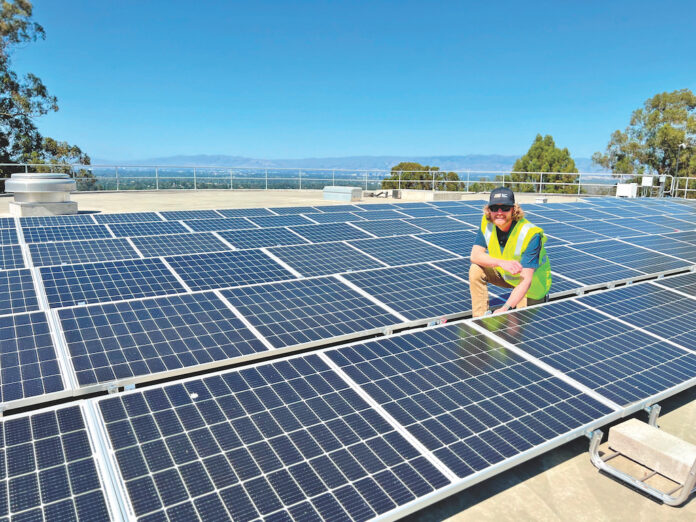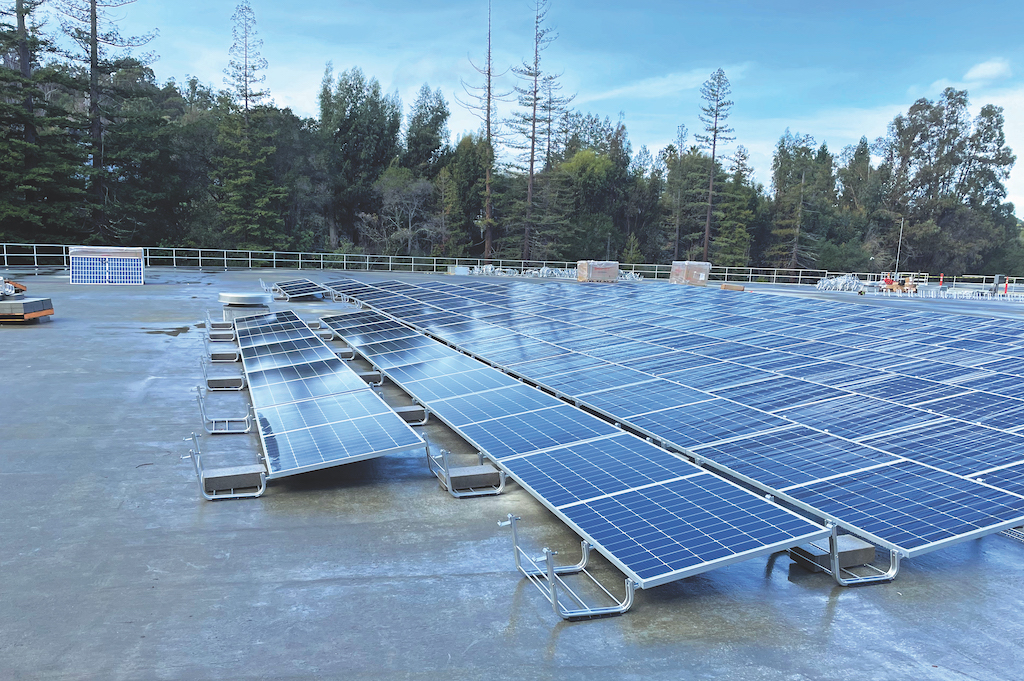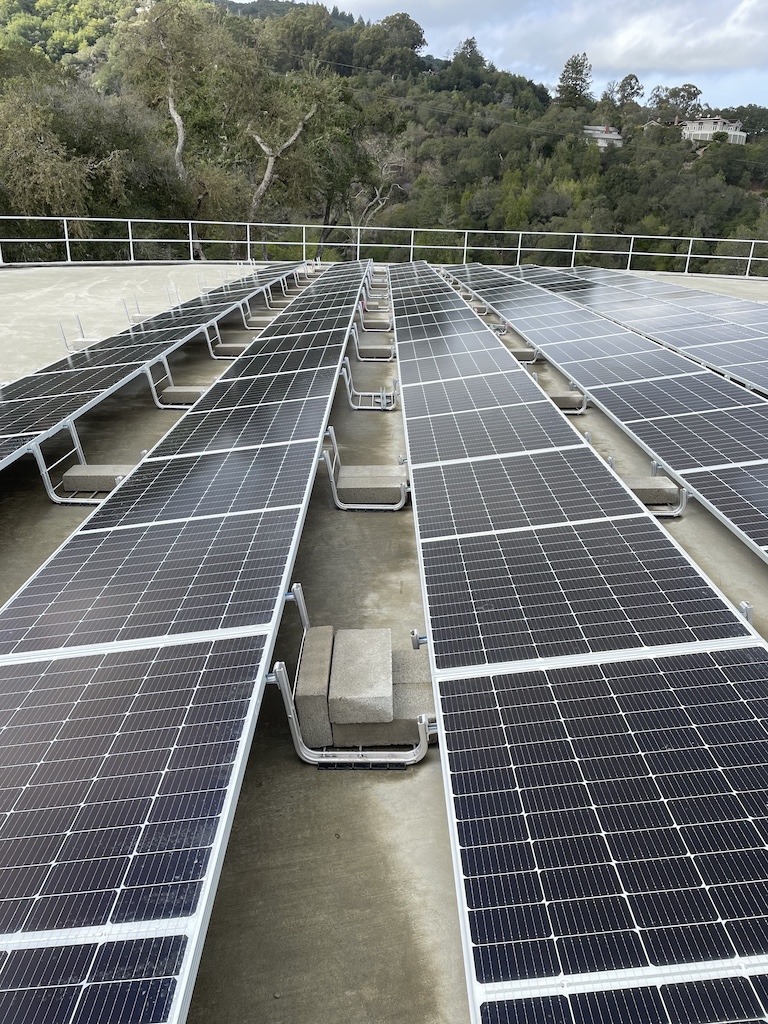
The publicly traded company that provides Los Gatos with water recently got the go-ahead to fire up two solar power generating stations—one in Los Gatos and one in Saratoga.
Together they’ll help keep about 21 tons of greenhouse gasses out of the atmosphere each year, says San Jose Water Assistant Chief Engineer Jake Walsh.
“We’re one of the larger energy users in the Bay Area,” he said. “The company has made a commitment to the environment and trying to reduce our emissions.”
On April 11, SJ Water got the green light to fire up a 33 kilowatt system at its Overlook Station in the hills above Los Gatos, which it expects will generate 53 megawatt-hours of electricity annually.
The company calculates this will prevent more than two tons of carbon dioxide equivalent from going into the atmosphere, each year.
Then on Friday, it was able to activate the Saratoga power plant (called Vickery Station), which—at 33 kilowatts of solar cell capacity, anticipated to generate 510 megawatt-hours of energy a year—is about 10 times larger.

If all goes well, this neighboring facility will stop 19.39 tons of carbon dioxide equivalent from being released into the air.
Walsh explains that, for a firm like theirs that’s in the life-sustaining-element business, reducing its environmental impact comes with unique obstacles.
“We can’t just pick up and move our pump stations and tanks,” he said. “The only way to cut back energy is for people to stop using as much water, or for us to offset those emissions.”
SJ Water is trying to reduce its greenhouse gas footprint by 50%: it’s stocking up on battery packs and adding 14,000 leak sensors, for example, as it seeks to operate more efficiently and put less strain on the planet.
“It’s been very clear from our CEO that this is a goal of his,” Walsh said. “I think people, internally, have taken that to heart.”
Outfitting their properties with solar panels to power the pumps was a key component of the plan.
And while it made sense for the utility to set up enough photovoltaic cells to drive its own operations, ironically, given the current regulatory environment, it wouldn’t have been a prudent decision—fiscally speaking—to build enough capacity to sell power back to the grid, he adds.

“The challenge is, with the net energy metering agreements with PG&E, it doesn’t make financial sense for somebody to blanket their entire area on one site with solar, because you can’t take credit…for the energy use you have in other parts of your service area,” he said.
SJ Water sources liquid from a series of intakes in the Los Gatos hills and routes it to the Montevina Water Treatment Plant, which can process upwards of five billion gallons of water a year through an ultrafiltration process.
“When it’s on, it’s serving probably all of Los Gatos,” Walsh said. “Right now it’s running quite a bit.”
Its Saratoga treatment plant serves that community, and distributes water into Cupertino, too.
About 10% of water for the entire system will come from surface sources this year, he notes.
SJ Water also gets recycled product from South Bay Water Recycling, which it pushes it out through its pipes, so fresh water isn’t wasted on things like irrigating parks.
In order to get drinking water to customers in the Santa Cruz Mountains, the utility has to fight against gravity.
That’s where the Overlook and Vickery stations come into play.

Water from Saratoga’s Vickery Station, where 8.7 million gallons of water can be stored, is pumped up to Los Gatos’ Overlook Station—located 847 feet above sea level.
That site now has a pump station and two water storage tanks, after a new 1.6 million gallon prestressed concrete one was added recently, bringing the total water storage there to 2.7 million gallons.
The panels in the Los Gatos area mirror what you might see on a larger residential parcel in town, as only part of this property was suitable for solar.
Then, water is sent up to a 78,000-gallon tank at 1,299 feet of elevation, to service the Beckwith Zone.
SJ Water hopes to complete three additional solar power projects over the next year.
But that won’t be the end of it.
“Solar is helping us create a cleaner Los Gatos, a cleaner Saratoga,” Walsh said. “We’re going to have to make sure we keep these panels clean.”









